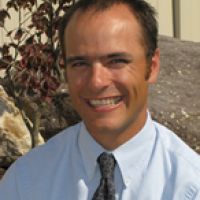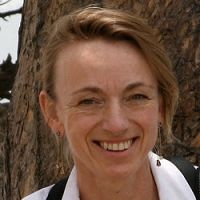Aufdenkampe et al. 2013
SI2-SSI: The community-driven BiG CZ software system for integration and analysis of bio- and geoscience data in the critical zone.
Aufdenkampe, A.K., Zaslavsky, I., Mayorga, E., Horsburgh, J. and Lehnert K. (2013)
Submitted to NSF Solicitation 13-525 Scientific Software Integration. Cross-CZO National
-
Christina, INVESTIGATOR
-
National, INVESTIGATOR, STAFF
-
National, INVESTIGATOR, STAFF
-
National, INVESTIGATOR, STAFF
-
National, INVESTIGATOR, STAFF
Abstract
Overview:
Critical zone (CZ) scientists from 16 bio- and geoscience disciplines are at the front line of efforts to effectively compile and use the "dark data in the long tail" of Earth science and integrate it with the "Big Data". As such, many see the CZ data effort as a pilot for the EarthCube endeavor. This proposal is motivated by strong and nearly unanimous cyber-needs expressed at a CZ-EarthCube workshop in Jan. 2013 (Award #1332257). Our overall goal is to co-develop with the critical zone science community a high-performance web-based integration and visualization environment for joint analysis of cross-scale bio and geo processes in the
critical zone (BiG CZ), spanning experimental and observational designs.
Project Objectives and Deliverables are to: (1) Engage the critical zone and broader communities to co-develop the BiG CZ software stack to meet their specific needs through a CZ community advisory committee and a series of two co-design workshops, four training & testing workshops, one CZ science synthesis institute and one workshop for citizen scientists and resource managers; (2) Develop the BiG CZ Portal web app for high-performance map-based discovery, visualization, access and publication of data on critical zone structure and function; (3) Develop the BiG CZ Toolbox to enable cyber-savy CZ scientists to directly access BiG CZ APIs to search, access, manage and publish data using a turnkey open-source scripting and database package; and (4) Develop the BiG CZ Central software stack as the backend for Portal and Toolbox functionality for single query discovery and access to data systems developed for multiple bio- and geo-science domains, including CUAHSI Hydrologic Information System (HIS), Integrated Earth Data Applications (IEDA), the System for Earth Sample Registration (SESAR), DOE’s System Biology Knowledgebase (KBase), Ecoinformatics MetCat holdings including all Long Term Environmental Research (LTER) data, DataOne, OpenTopogaphy, and others.
Intellectual Merit :
The CZ science community has identified that the central scientific challenge of the critical zone science community is to develop a grand unifying theory of the critical zone through a theory-model-data fusion approach to answer: (1) how do tectonics, lithology, climate and biology co-determine the evolution of critical zone structure and function?; (2) What are the drivers of energy and material fluxes (i.e. water, sediment, carbon, nutrients, solutes, etc) moving through the critical zone?; (3) How will critical zone structure, function and evolution respond to human and natural disturbances and over various time and spatial scales? CZ-EarthCube participants also unanimously envisioned -- independently in each breakout group -- that software similar to what we propose would enable such transformative understanding.
We will develop the BiG CZ software system upon widely-used, high performance, open source, multi-platform software components. We believe that an engaging user interface with very fast response times is a fundamental requirement for user satisfaction and therefore software sustainability.
Broader Impacts :
We believe that a key aspect of increasing the computational capabilities of the CZ community requires increasing the computational skills of the CZ community. We will partner with the Software Carpentry project to teach 80 early-career Earth and environmental scientists computational science skills through four Bootcamps and one CZ Science Synthesis Institute, which will serve the dual purpose of testing and evaluating the BiG CZ system.
From our previous experience with the Model My Watershed project (Award #0929763), we believe that the BiG CZ Portal can hold exceptional value toward engaging resource managers, citizen scientists and even secondary school teachers and students. We will thus hold a workshop for resource managers and citizen scientists to introduce them to the deliverables outlined above and to solicit feedback on the usability of those tools to meet their needs. We will also develop curricular materials around the portal designed specifically for secondary teachers to assist them to integrate research data into their classrooms.
Citation
Aufdenkampe, A.K., Zaslavsky, I., Mayorga, E., Horsburgh, J. and Lehnert K. (2013): SI2-SSI: The community-driven BiG CZ software system for integration and analysis of bio- and geoscience data in the critical zone. Submitted to NSF Solicitation 13-525 Scientific Software Integration..
 This Paper/Book acknowledges NSF CZO grant support.
This Paper/Book acknowledges NSF CZO grant support.
Explore Further





